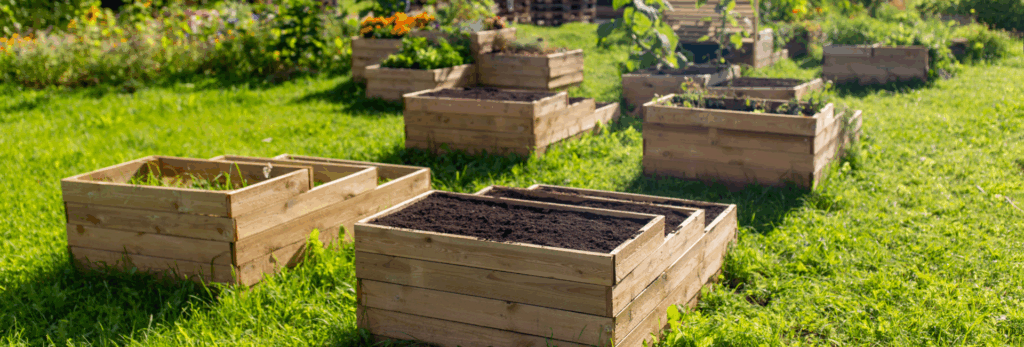At Inter-Faith Food Shuttle, we believe in the value of local food systems that empower our neighbors to meet their own food needs. That’s why we prioritize sharing at home gardening tips and tricks to aid in garden maintenance all year long.
Here’s a guide to maintaining your garden this fall.
Soil Health & Composting
Healthy soil is the foundation of successful fall gardening. Adding compost improves soil structure, increases water retention, and restores nutrients that were depleted over summer harvests. Fall is an excellent time to regenerate soils with compost, cover crops, or organic mulches, setting the stage for both fall and spring planting cycles. Composting also diverts food waste from landfills, which in turn reduces greenhouse gas emissions.
Planning & Planting for Fall
Successful fall gardens begin with thoughtful planning. In North Carolina’s climate, fall planting can extend the growing season with crops like lettuce kale, collards, spinach, carrots, and broccoli. What to plant and when to plant it can be determined by the growing zone where you live. Raleigh, NC is in growing zone 8a, which means temperatures will likely remain above freezing until the end of October. You can find your growing zone through the North Carolina State Extension Service Website. Find your growing zone here.
Gardeners should consider succession planting, frost dates, and soil temperatures to maximize yield. As light decreases, plants will grow more slowly. For the biggest harvests plant early and often. Planning your Fall Garden and incorporating crop rotation in your plan helps break pest and disease cycles while improving long-term soil health.
Garden Care & Maintenance
Caring for a fall garden involves adjusting practices to cooler, shorter days. Mulching conserves warmth and soil moisture, while row covers or low tunnels can extend harvests and protect crops from early frosts. Watering needs may decrease compared to summer, but consistency is still important. Integrated Pest Management (IPM) practices, such as scouting and companion planting, can reduce pest pressure without heavy reliance on chemicals.
Harvest & Storage
Timing is key in harvesting fall crops. Leafy greens should be harvested frequently to encourage regrowth, while root crops like carrots and beets can often stay in the ground until a hard freeze. Post-harvest handling is equally important. Washing, drying, and storing produce correctly extends freshness and reduces food waste. For home gardeners, simple preservation methods such as freezing greens or canning tomatoes can make fall harvests last well into winter.
Fall gardening is not just about food production; it’s an opportunity to foster community, resilience, and learning. Inviting neighbors, family and friends into the garden can turn a seasonal activity into a shared educational experience. Inter-Faith Food Shuttle’s garden workshops and school partnerships model this approach by combining practical skill-building with deeper conversations about food security and sustainability. We invite you to explore the joys of gardening with us this fall.

